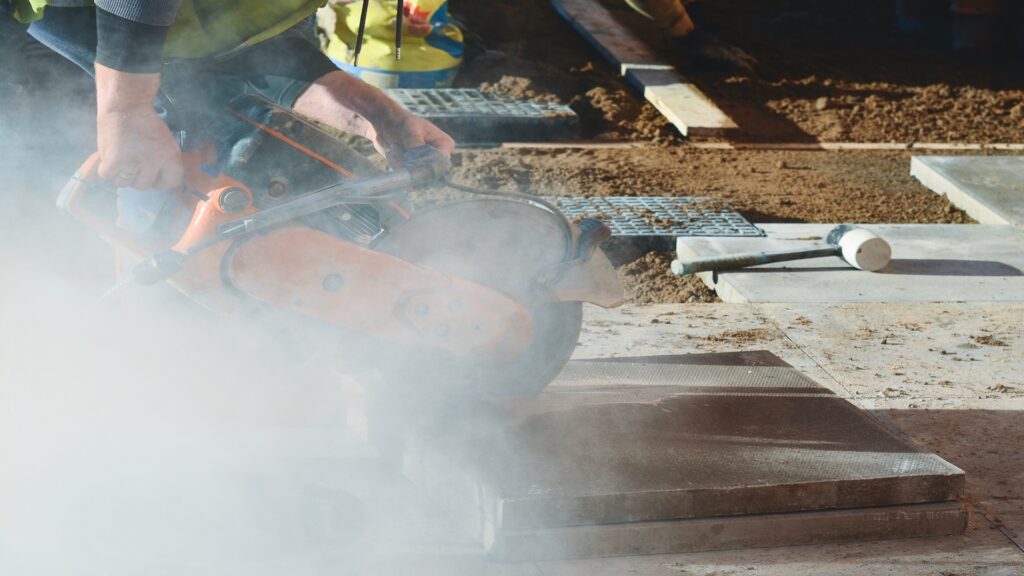HSE Updates Guidance on Silica Dust Risks
The Health and Safety Executive (HSE) has recently updated its critical guidance document on “Health Surveillance for Those Exposed to Respirable Crystalline Silica (RCS).” This timely update arrives as dry weather conditions increase the risk of airborne particles in various work environments.
The refreshed guidance, released in March 2025, serves as an important reminder for employers to evaluate their compliance with Control of Substances Hazardous to Health (COSHH) regulations, particularly as dry conditions can exacerbate dust-related hazards.

Understanding the Dangers of RCS
Respirable Crystalline Silica is produced when common construction materials—including concrete, stone, rock, slate, and tile—undergo cutting, drilling, grinding, sanding, or polishing. These processes release microscopic silica particles that are invisible under normal lighting conditions but can penetrate deep into workers’ lungs.
Prolonged or intense exposure to RCS can lead to several serious health conditions:
Silicosis: An irreversible lung disease causing progressive breathing difficulty
Lung cancer: HSE identifies silica as the second greatest risk to construction workers after asbestos
Chronic Obstructive Pulmonary Disease (COPD): Leading to long-term breathing problems
Additional health risks: Including increased susceptibility to tuberculosis, kidney disease, and arthritis
Warning Signs and Symptoms
Workers should be vigilant for early indicators of silica-related illness, including:
- Persistent coughing
- Progressive shortness of breath
- Unusual fatigue or exhaustion
- Recurring chest infections
- Wheezing
It’s crucial to recognise that RCS exposure isn’t limited to those directly operating cutting or drilling equipment. During dry, windy conditions, silica dust can travel significant distances, potentially affecting:
- Site labourers performing cleanup duties
- Workers in adjacent areas
- Anyone in proximity to dust-generating activities
Employer Obligations Under COSHH
The updated HSE guidance emphasises that health surveillance is a legal requirement when workers face foreseeable health risks from hazardous substances like RCS. Employers must:
- Identify exposure risks: Assess where and when dust exposure might occur
- Implement effective controls: Including wet cutting methods, proper dust extraction systems, and appropriate Respiratory Protective Equipment (RPE)
- Establish comprehensive health surveillance: Including regular lung function tests, medical evaluations, and detailed record-keeping
- Inform workers: Ensure all employees understand the risks and recognize the importance of reporting symptoms
Taking Proactive Steps
With the HSE’s renewed focus on this issue, now is the ideal time for employers in construction, stone masonry, quarrying, ceramics, and related industries to review their dust management protocols and health surveillance programs.
The updated guidance document (G404) provides detailed direction for maintaining compliance and more importantly, protecting your workforce from potentially life-altering health conditions.
Access the complete guidance directly from the HSE website or consult with your occupational health advisor to ensure your practices meet current standards.
In dry conditions, prioritising dust control isn’t just about compliance, it’s about preserving the long-term health of employees.
This article is supported by our risk management partners, Arch Risk Management. For more information, please visit www.archriskmanagement.co.uk.